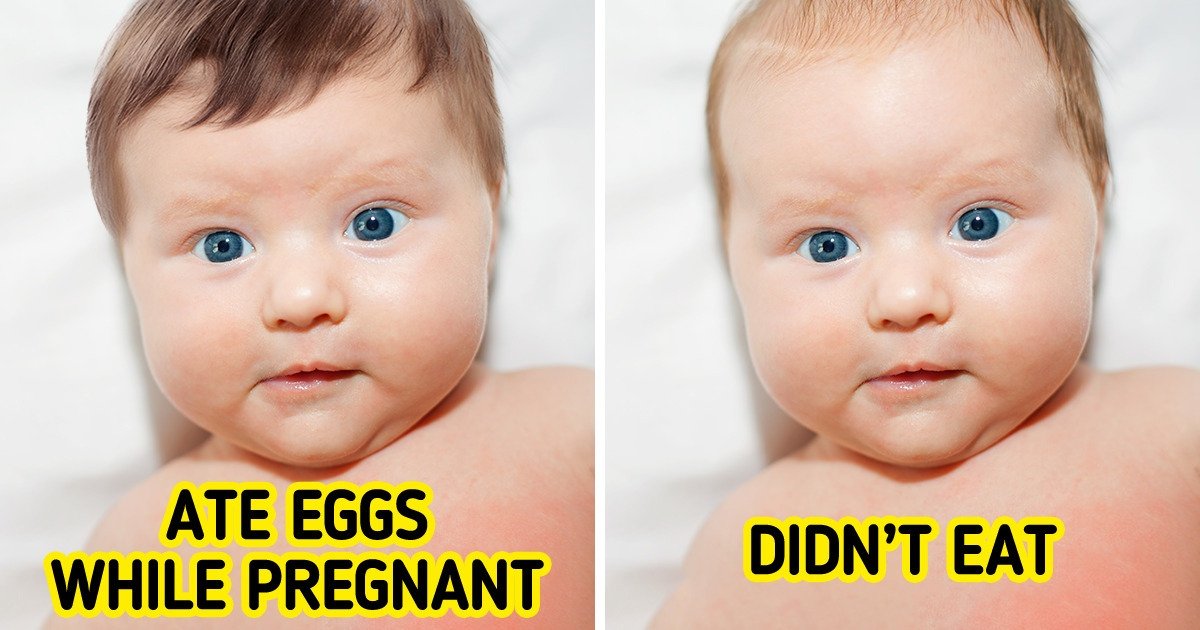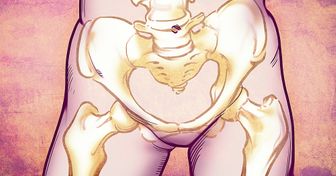14 Women Who Know Exactly Why Life With a Man Is Full of Surprises


Genetics is not the only factor that impacts a baby’s appearance, because what happens during the pregnancy could also influence the child’s health and future looks. From the food that mommas-to-be put inside their bellies, to the conditions of their surroundings, there are many surprising factors that can affect the growth and development of newborns.
Bright Side listed 8 inconspicuous things that could possibly shape a baby’s physical features, and we hope they will help women to become more mindful of their pregnancy journey.
A study found that infants born in summer had a higher birth weight average, and a taller adult height average compared to those that came into the world during the colder seasons. In fact, winter babies had the complete opposite characteristics.
Scientists noted that adequate exposure to sunlight (which mostly happens during the summer) is a good source of vitamin D, which is essential for fetal growth. Vitamin D helps in healthy bone development by allowing the absorption of calcium and phosphorous, and contributes positively to the child’s weight and height.
Pregnancy cravings are perfectly normal, but you might want to cut down on sweets if you don’t want your sugar consumption to reflect on your baby’s flab and rolls. Gestational diabetes (GDM), or increased blood sugar levels during pregnancy, can affect the innocent fetus that depends on you for its nutrients.
The baby can store that extra sugar as fat, which puts them at a higher risk of being obese, getting diabetes, and having jaundice (a treatable condition that makes the skin a bit yellow). Experts recommend managing GDM through proper diet and exercise, or in extreme cases, taking insulin or medications. But please keep in mind that it is always best to speak with your doctor or consult a specialist for the proper treatment.
There’s a long-standing myth that drinking milk will make the baby’s skin fairer. There is no scientific proof for this, but what published studies did establish is a link between milk consumption and healthy birth weight. According to one medical journal, women who drank a cup of milk (or less) per day, gave birth to smaller babies than those who gulped more. And each additional cup increased the weight by 41 grams or 0.09 lbs.
The American College of Obstetricians and Gynecologists (ACOG) recommends that pregnant ladies keep their coffee consumption to less than 200 milligrams per day (or about a 12-ounce cup). Caffeine is quickly absorbed and passed on to the placenta, and it can cause a high-level build-up if ingested too much. This may restrict fetal growth and lead to an underweight newborn.
Research suggests that eating peanuts during the child-bearing months (given that the future momma is not allergic to it, of course) can lower the risk of peanut allergies in their offspring. Allergic reactions can cause hives, redness, or swelling. Other non-visible symptoms include digestive problems, shortness of breath, and a runny nose. The findings suggest that early exposure to this type of food can protect the baby from these symptoms.
Dirty or contaminated air can cause problems with a baby’s birth weight. According to researchers, for every 10 microgram increase of pollution (per cubic meter of air), the average birth mass decreases by 8.9 grams (or about 1/3 of an ounce). Pregnant women can try to combat the effects of air pollution with food rich in vitamins and antioxidants.
A baby’s hair begins growing inside the womb at around the 14th or 15th week. Protein is good for your hair growth, and your little one’s as well (since you’re passing the nutrients to them). Eggs are not only a great source of protein, but they also contain biotin, which is good for the strands.
Other foods that are beneficial for our crowning glories are spinach (rich in folate, iron, and vitamins A and C, which help keep the hair healthy and the scalp moisturized), avocados, and nuts, which help fight against hair loss. Fatty fish is also a good source of omega-3 fatty acids, but expecting ladies should exercise caution and consult with their OB-GYN first, since some fish are risky to eat during pregnancy.
The time within which the umbilical cord is clamped may have an effect on the newborn’s color right after delivery. According to one mother, she noticed that when her elder son was born, the cord was cut right away, and he initially looked blue before gradually gaining some pink. With her daughter’s birth, she decided to keep the cord intact until it stopped pulsing (took about 11 minutes), and the bouncing baby girl came out “very, very pink.”
Science has backed this observation, saying that a 5-minute delay in the clamping of the cord helps transmit more iron to the infant, and may have positive effects on the baby’s brain structure. However, there are some cases when it would need to be clamped ASAP — for example, in cases of a hemorrhage or in babies needing urgent medical attention.
Did you follow any pregnancy practices that you knew would have an effect on your baby? What child-bearing myths or beliefs are popular in your country?











